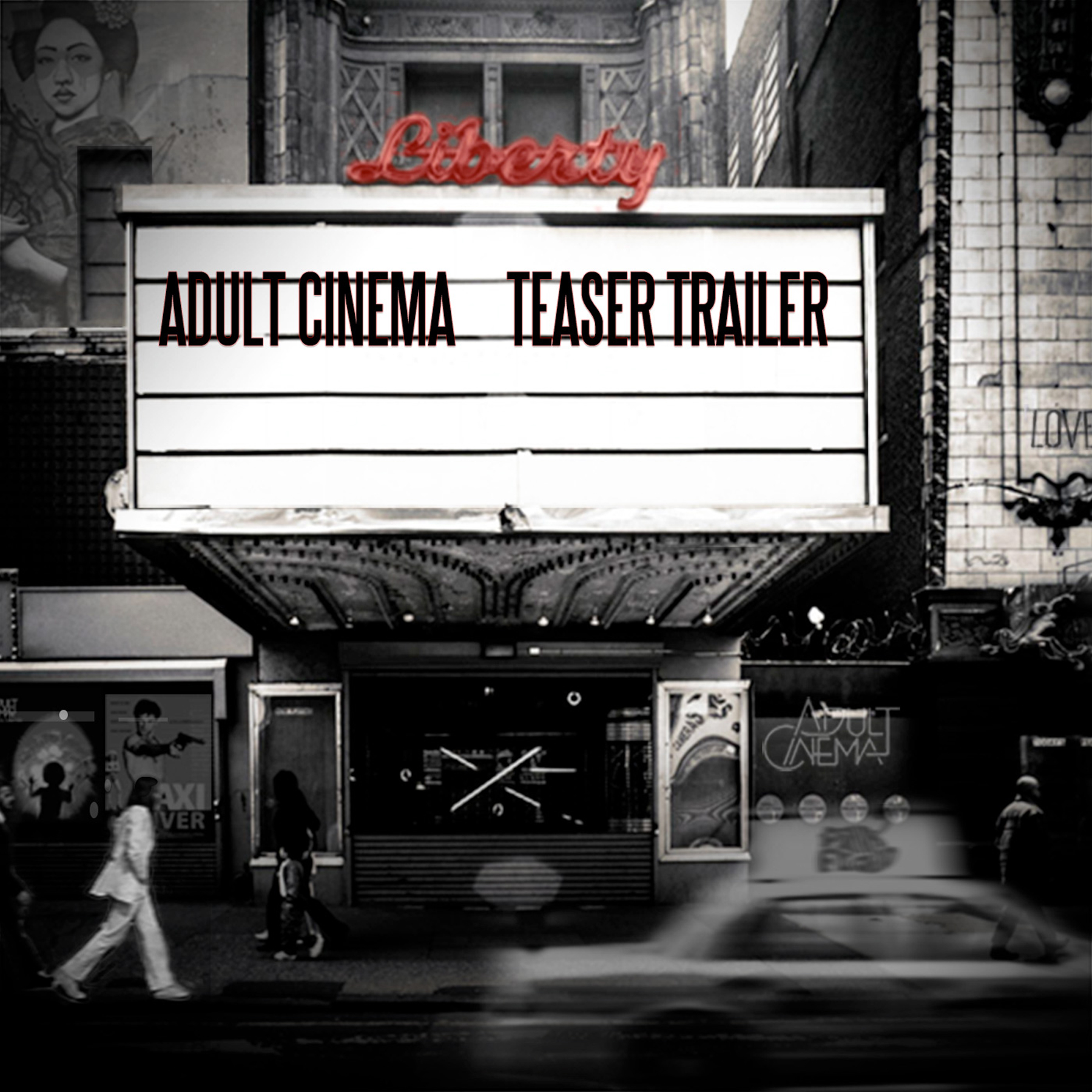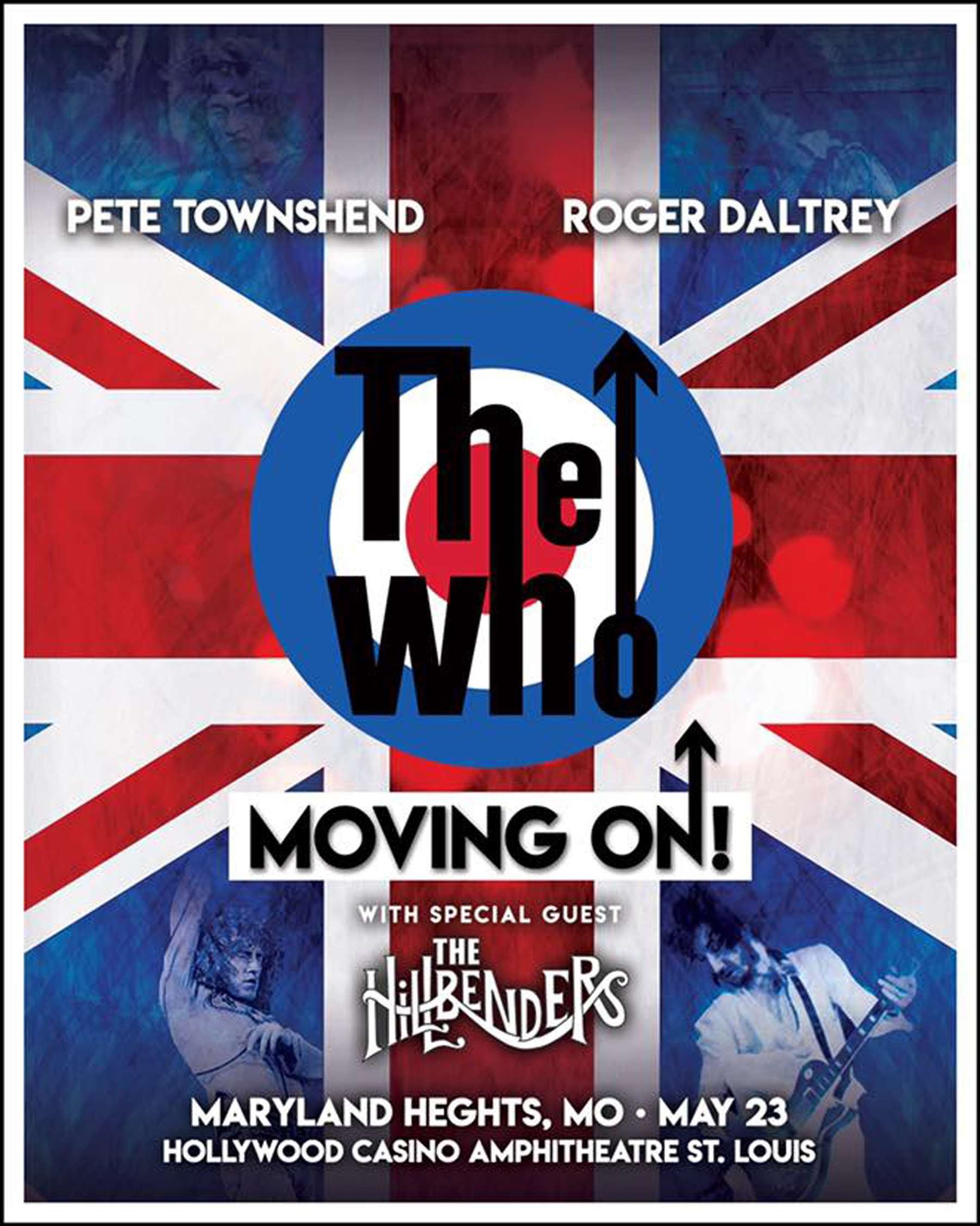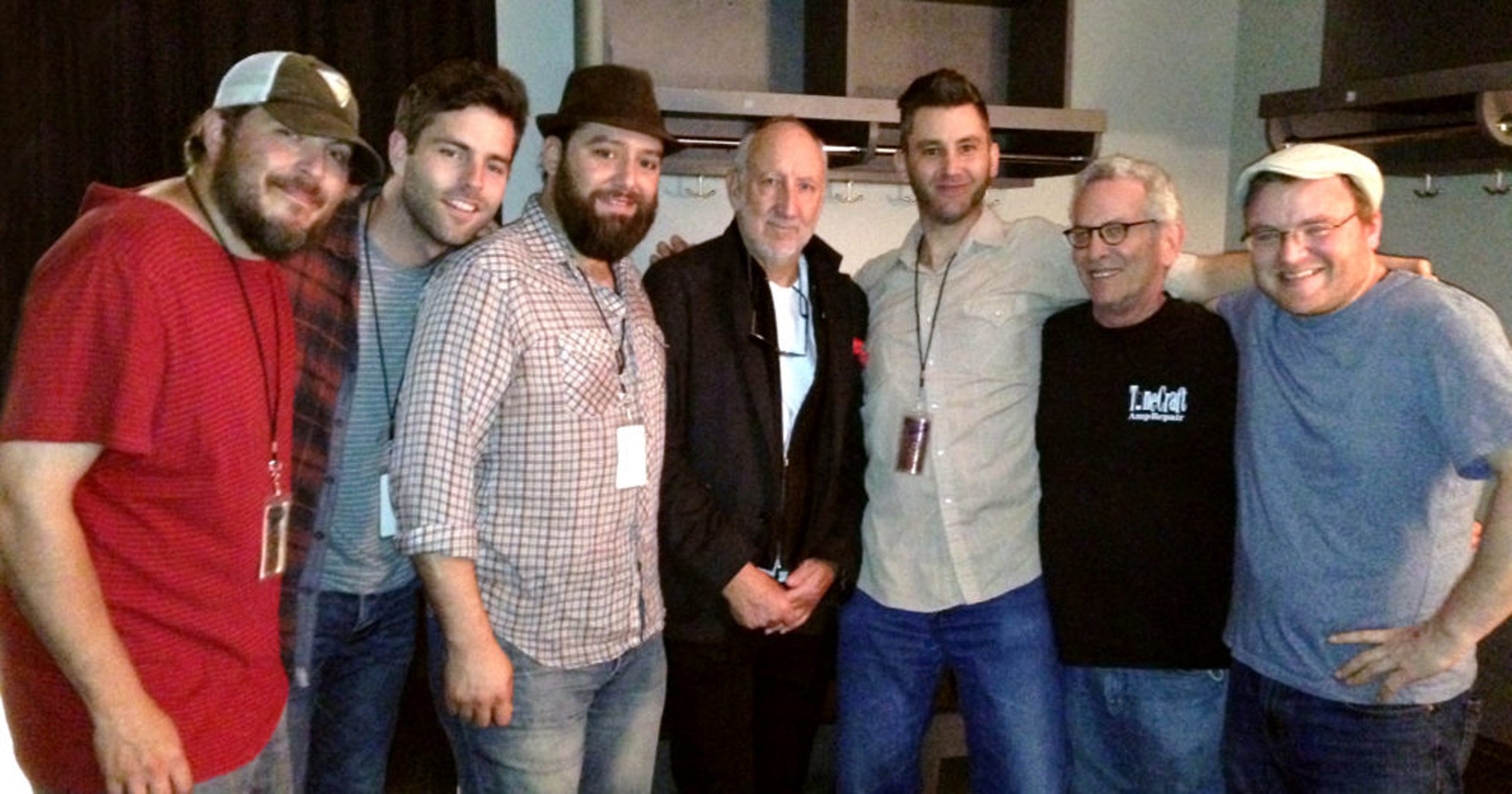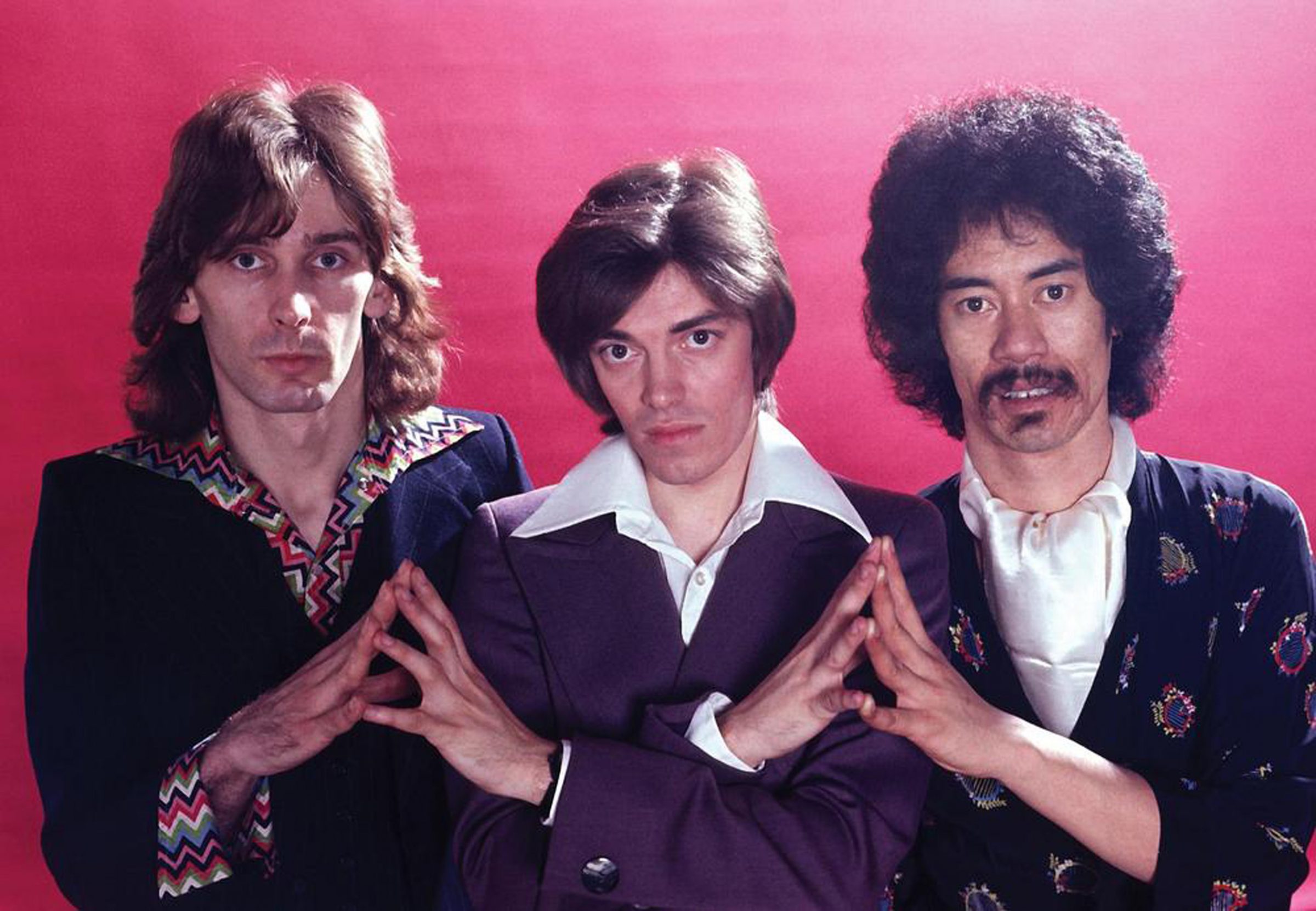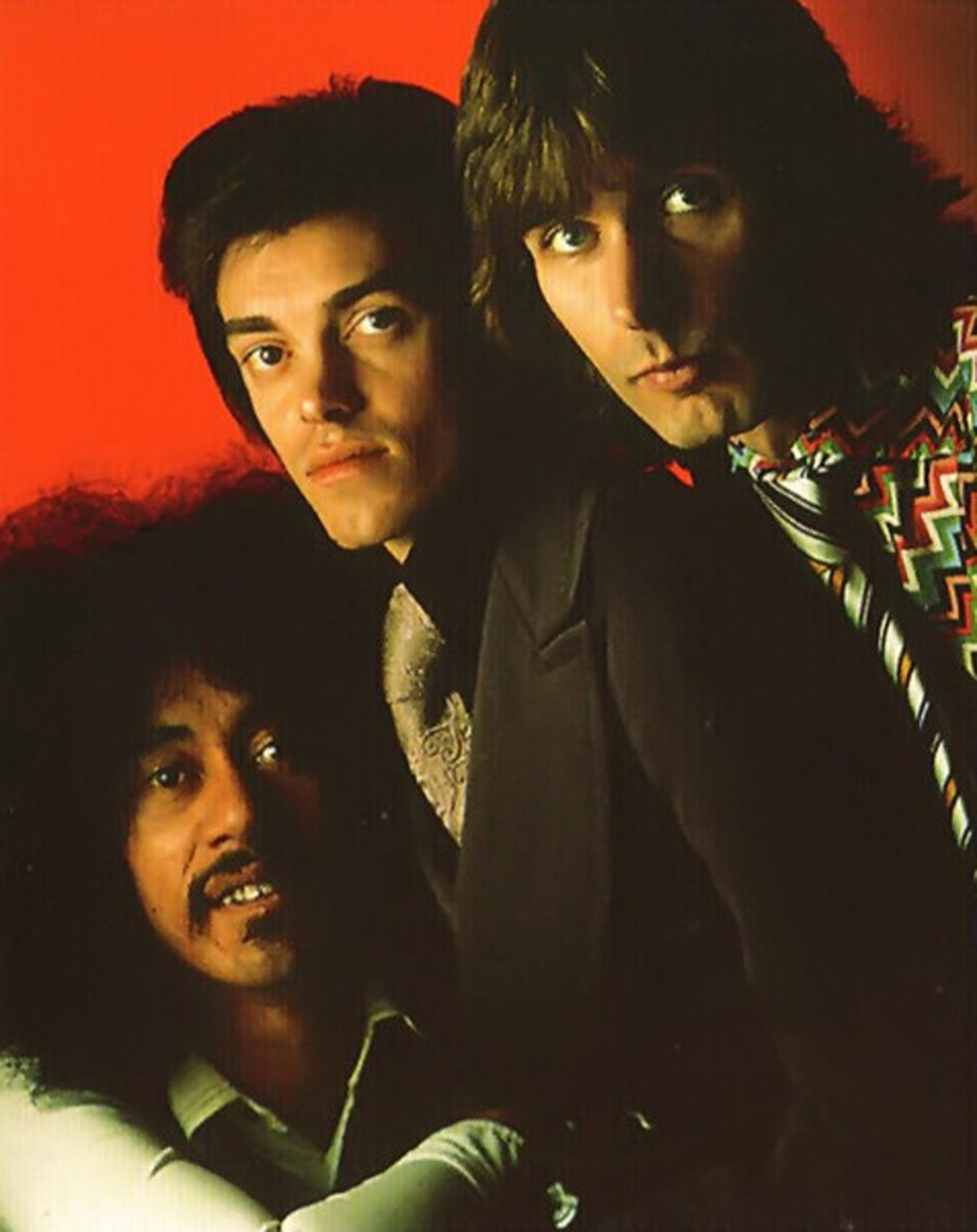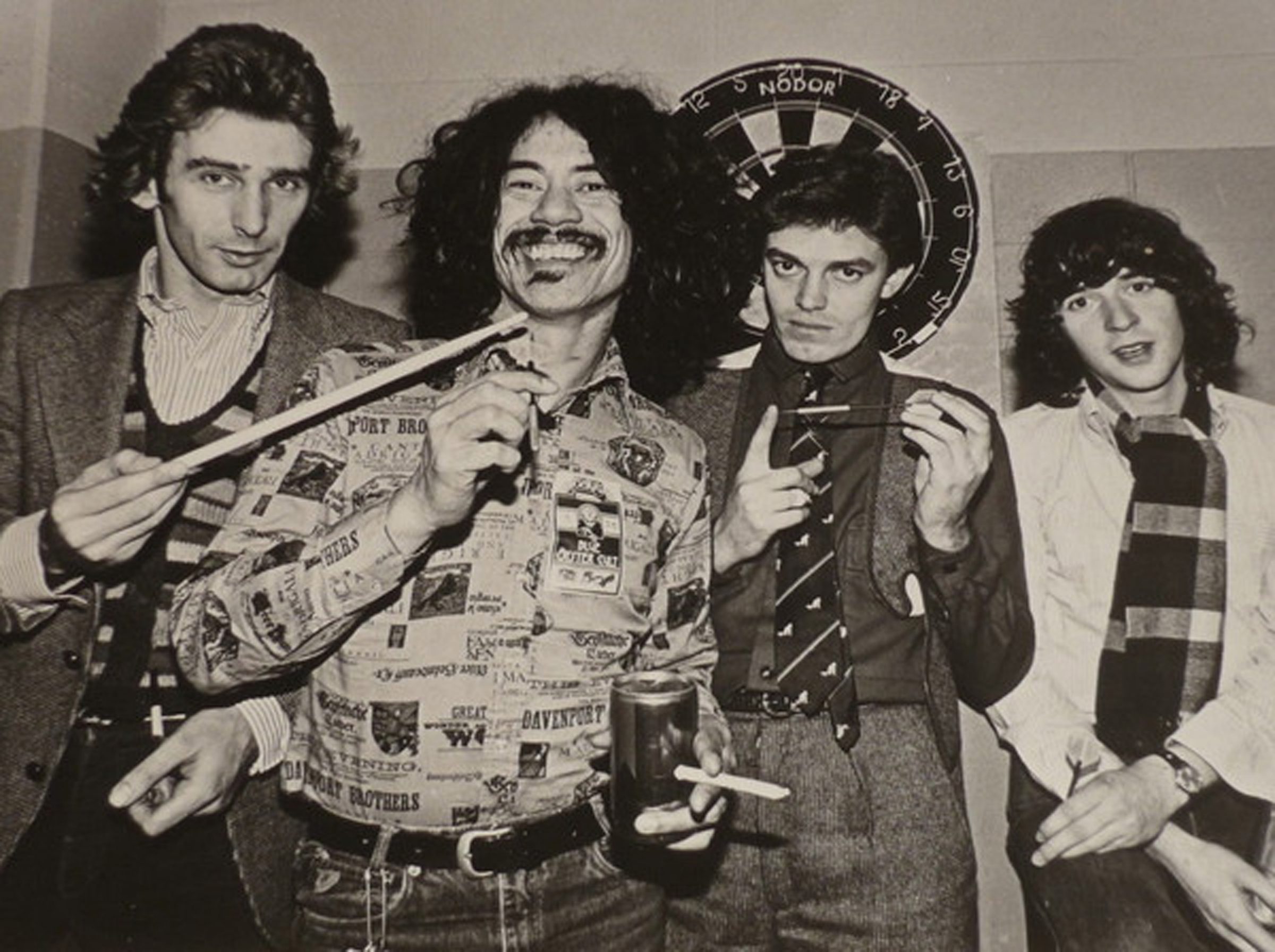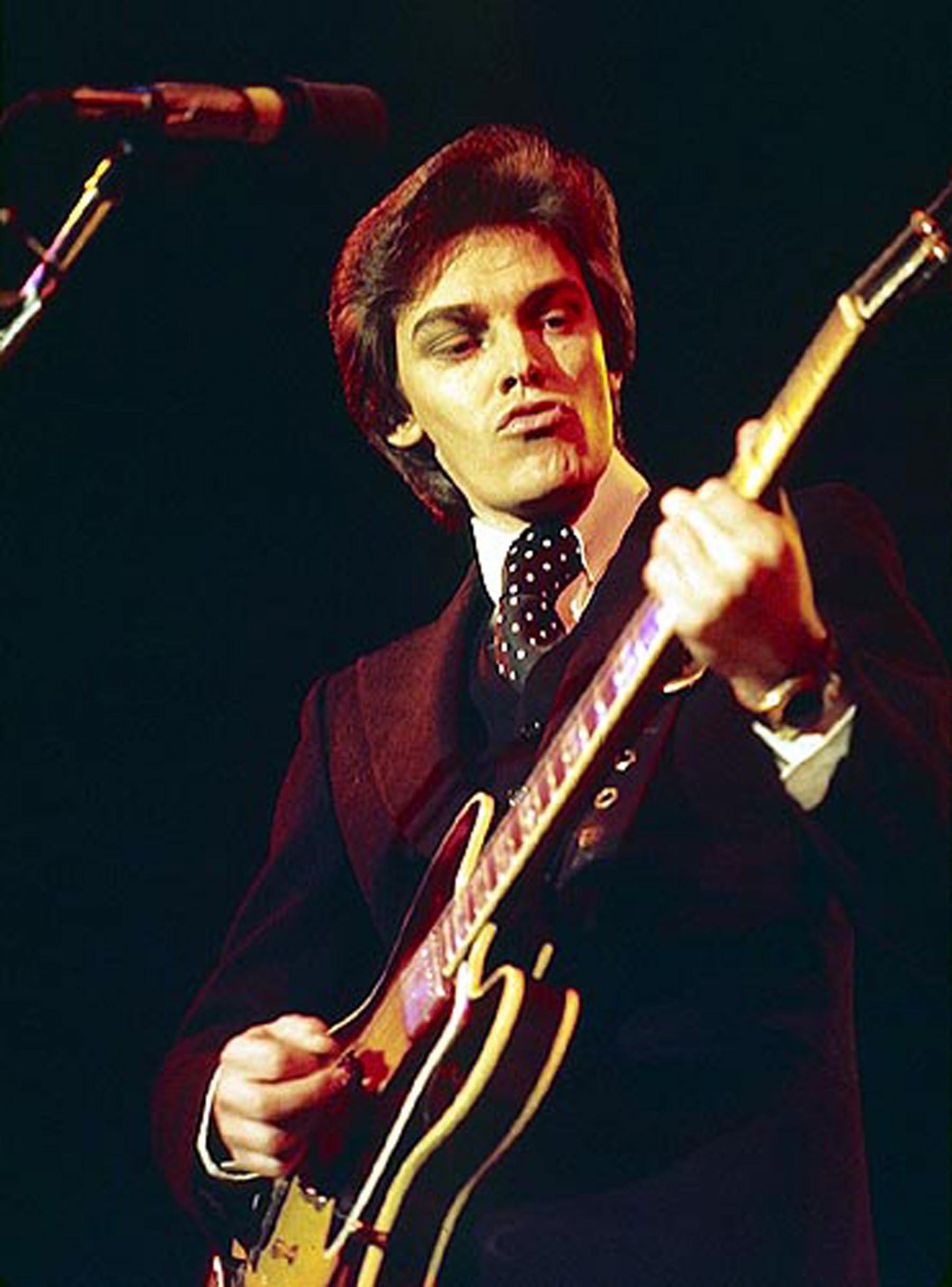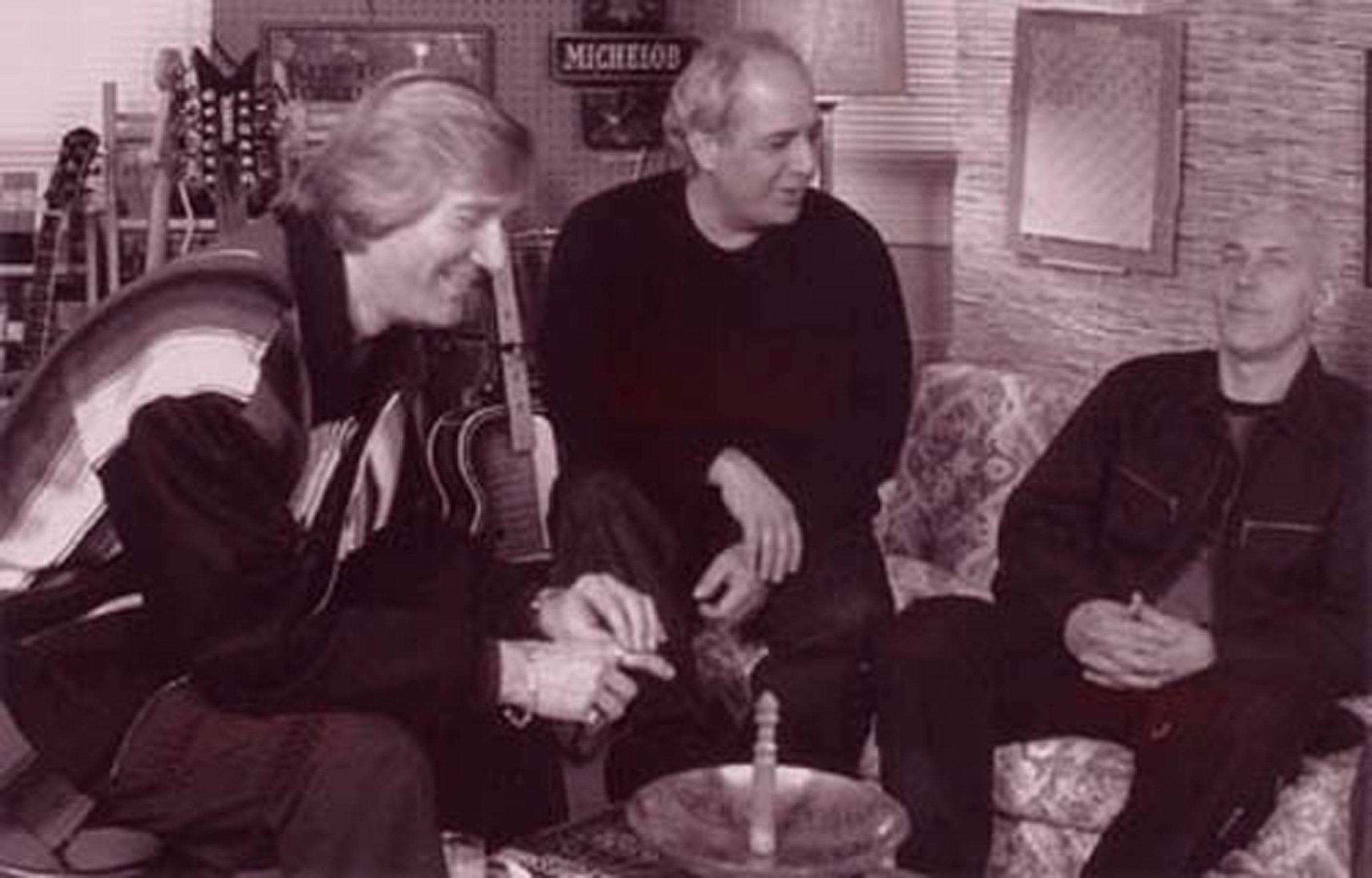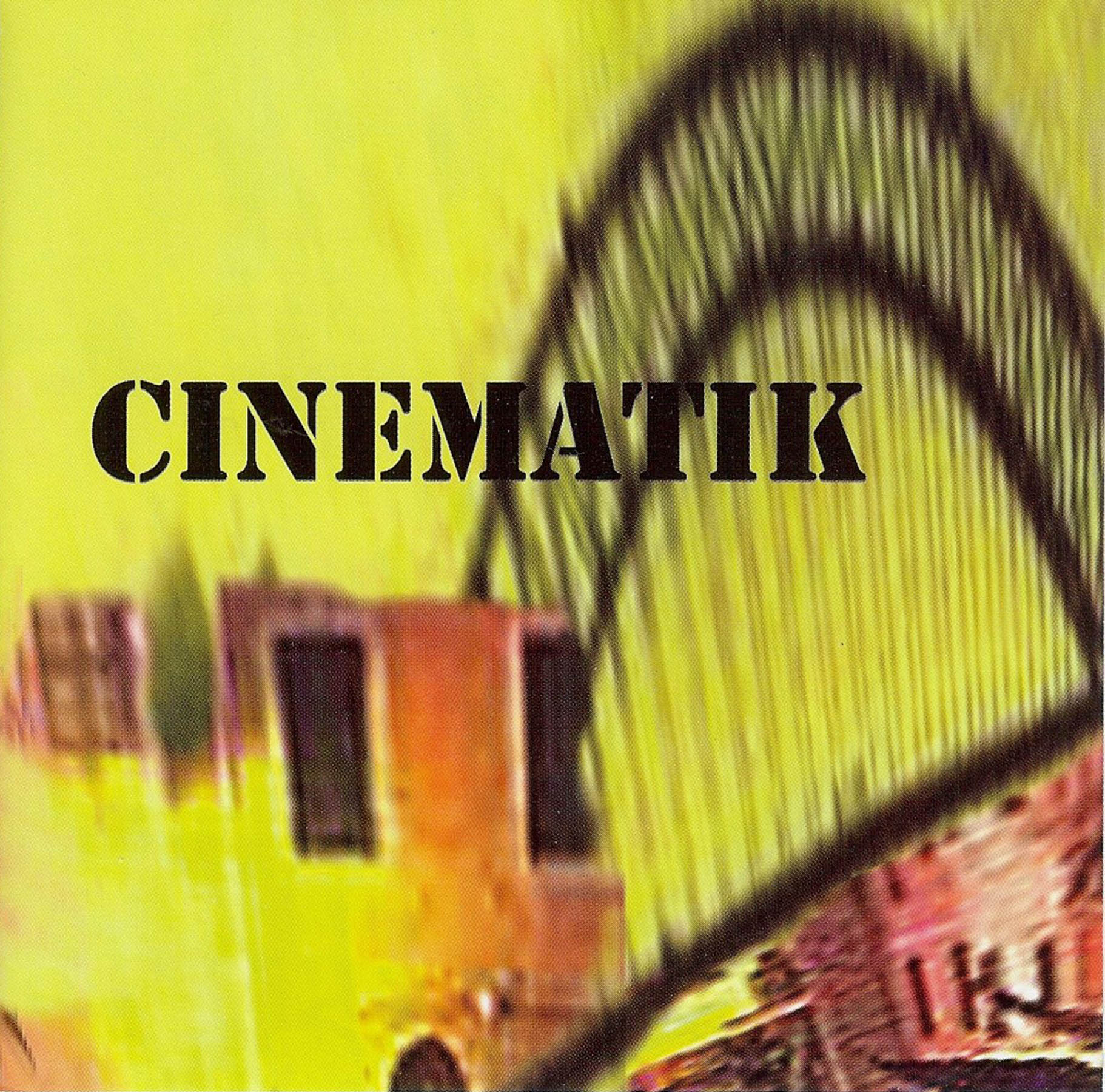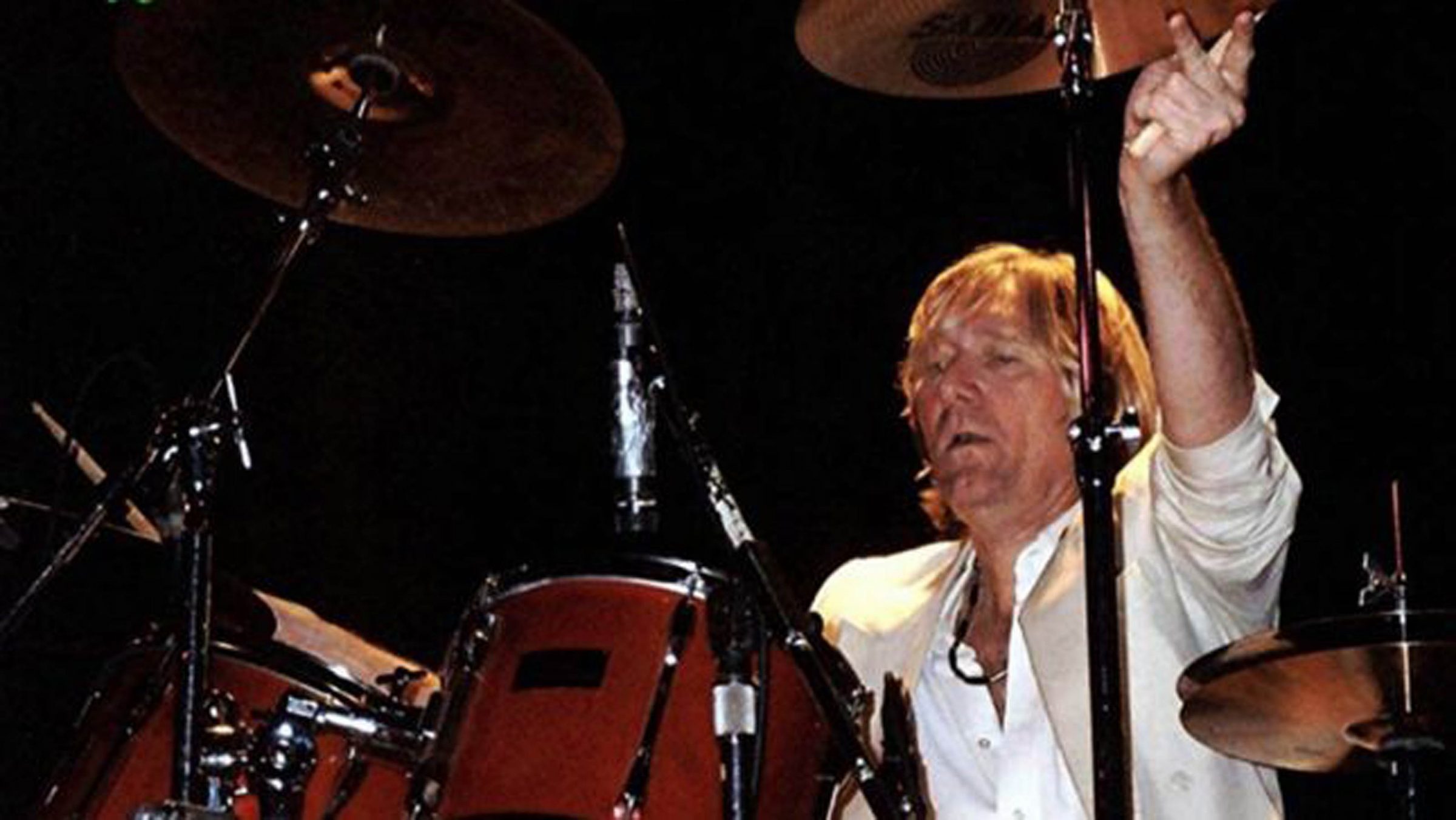(BLACKBERRY WAY RECORDS; 2019)

In the past, whenever I got bogged down with too many records to listen to and review, I would lump a lot of like-minded releases (straight-ahead rock, Jazz, Country, compilations,,, whatever) together, giving each a nice little paragraph (or more, depending on how many I had to write about… I remember doing something like fourteen Punk records in the course of one review) about each. I still do that occasionally, when it makes sense to do so; this one is a no-brainer: Michael Owens produced both releases, Fools Brian Drake and Terri Owens do some backing vocals on THE RIGHT KIND OF CRAZY, both records were released by Michael’s Blackberry Way Records on the same day. It really wasn’t my intention to review them together, but the final piece seemed to fall into place when the Owens record showed up at my door in the same package as THIRD. The die, as the saying goes, was cast.

The April Fools’ third release (thus the name of the record) features a retooled band, having lost guitarist Clay Williams, whom, I assume, has gone on to greener pastures. Williams was replaced by two musicians, guitarists Brad McLemore and the aforementioned Terri Owens. The result made the original quartet’s tight sound even tighter as a quintet. This is borne out on the opening track, “Bell of Stone,” a sort of updated psychedelic Americana. Vocalist Brian Drake has a rather world-weary rasp that is immediately the crowning glory of this song and album, somewhere between Bob Seger and a young Levon Helm. The guitars (by McLemore, Owens and Drake) seem to shimmer and there’s an undeniable sting and bite to the solo. Ben Kaplan offers up some solid drumming and an insistent, melodic bass line by Scott Hreha gives the whole thing a certain buoyancy that is not unappealing. “Long Shadows” is a tune that reminds me of both the Band (musically) and the Dead (vocally). It’s a slow ballady sort of thing that highlights the group’s four part harmonies. The piece borders on overstaying its welcome, but seems to end at just the right moment. Graham Gouldman’s (by way of the Hollies) “Bus Stop” is a shimmering piece of Pop history that gets a fairly faithful retelling here. The guitars may be a bit more urgent and Terri Owens’ mandolin adds a new flavor, weaving in and out of the mix, just under Drake’s pleasantly gruff delivery. For some reason, the First Edition’s “Just Dropped In (To See What Condition My Condition Was In)” comes to mind listening to “Shaky Ground.” Could be the wah-wah guitar and utterly haze-inducing solo; maybe it’s the swirling vocals that are brilliantly scattershot, alternately overlapping each other, then complimenting the rest with a great harmony part. Owens is a lady that certainly knows how to write a great ‘60s acid burn of a tune! “If I Can’t Make Her Happy” is sort of a throwback to those star-crossed tragic lover songs from the late ‘50s, all gussied up with a new millenial sheen, and highlighted by some really pretty guitar work and backing vocals.
The Fools put a nice gloss on Dylan’s classic “My Back Pages.” This version features finely understated vocals and a Byrdsian approach to the instrumentation that has always worked so well on the Zim’s music. There’s more of the brilliant guitar solos that we’ve come to expect from this band, with the rhythm section highlighting their ample abilities with a great Hreha bass line and a solid backbeat and fills from Kaplan on drums. Terri Owens takes on the vocal duties for “You Make My Heart Beat Too Fast,” a slow-burning rocker written by Julie Anne Miller (originally recorded for the BUDDY AND JULIE MILLER album in 2001 by, well… Buddy and Julie Miller). The track features killer guitar throughout, as another awesome solo rides the cut into the fade. “Summer Sun (Redux)” has a slightly psychedelic Blues groove, a distinct highlight of this remake from the Fools’ first album. I know I’m sounding like a broken record by this time but… again, great guitar, both straight and effects-laden. Scott’s rumbling bass, Ben’s spot-on drumming and an idling organ part from guest Glenn Manske (of which we’ll hear more later) add to the lazy feel of the song, the musical equivalence of the lethargic feeling brought on by the summer sun. Closing out the record is “15 Minutes.” It’s a Country-flavored tune that features a brilliant bass part that could very easily have appeared on an album by the Jam or Elvis (the important one, not the dead fat guy). With a dobro and Terri’s mandolin filtering through the swampy miasma of the instrumentation, the drums offer a lot to enjoy just under the current. The backing vocals are a nice counter to Brian’s gruff voice. As an introduction to what’s happening in the Minneapolis music scene today, you can definitely do worse than the April Fools’ THIRD.

Cementing the connection between the Minneapolis of the Replacements, Prince and Husker Du is producer/recording studio owner/record company owner/songwriter/multi-instrumentalist (and probably another string of slash marks that I’m missing) Michael Owens. Owens’ latest record, THE RIGHT KIND OF CRAZY, is fourteen tracks (and one bonus cut from a reunited Fingerprints, Michael’s late ‘70s band) that is as varied as the scene that spawned that first major wave of the “Minneapolis sound,” as well as Michael’s own Blackberry Way Studio and the record company that shares that name. The first track, “Comic Book Creep,” features some awesome boogie with a little bit of woogie thrown in for good measure. Owens has a pleasing, better than average voice; there’s some very nice guitar leads and solo from guest artist Curtiss A and Owens himself and excellent piano from Glenn Manske, who plays a major role on this record. “A Song For You” switches gears from a rockin’ Blues to a slow, tragic type of girl group sort of song that features strong backing vocals (as such songs require) from Robert Langhorst and Terri Owens. Also on display is an echoey, reverb-drenched solo and another strong piano part from Glenn. Sounding very much like vintage Monkees, “60 Cycle Rumble” sees Michael delivering an over-the-top vocal performance that reminds me of a younger, still-alive Wolfman Jack. Manske’s organ and outstanding guitar work from Owens make the Pre-Fab Four comparison even more relevant. As the name implies, “Used Blues” is a slow Blues that falls somewhere between Stevie Ray and Michael Buble on the Blues authenticity scale. Owens former Fingerprints bandmate, Robb Henry, offers up some solid lead work and a soulful solo. “Without Sin” sounds a little like “Minnesota boy does the Eagles” during the intro.Thankfully, it morphs into another slow-burn number with a strong Bill Grenke bassline. I kept waiting for a child’s voice to say “Mommy, where’s Daddy?” during the breaks leading into the guitar solos and, of course, anything that elicits memories of the Coopers ranks very high on my list. However, the cut, at more than seven minutes, does tend to drag on; thankfully, though, it doesn’t overstay its welcome by much. Up next is “Old Man Joad,” a kind of jangly Byrds-cum-Tom-Petty thing, only without the jangle. Continuing a nice little theme here, the number features some nifty lead and backing vocals, more solid bass from Grenke and a killer guitar melody throughout. In a different time, this one coulda been a hit at AOR, Adult Contemporary or Country radio. Unfortunately, as radio has become ever more genre-centric, it’s unlikely that today’s programmers could figure out what to do with such a great song! “Chase the Rain” is yet another slow tune with some nice guitar. Grenke continues to impress on bass as does Manske with some more great organ work. I guess the title comes from the sounds of falling rain at the beginning and end of the track.
“Falling” is not a cover of the Tom Petty song; this one has more of an Alternative Celtic feel to it (if that makes any kind of sense). The Celtic vibe is enhanced with Manske adding strings and flutes to his solid piano playing, while Kevin Glynn (another refugee from Fingerprints) adds a little added thump to Owens’ programmed drums with some live tom toms. The vocals blend into the hazy mist of the musical backdrop, leaving the listener with a gooey warm feeling somewhere around the heart. A short little ditty called “Over the Moon” follows. With a jaunty, bouncy feel, it’s simply a fun love song, evoking the feeling the name conjures in one’s mind. Gifted with one of the best song titles ever, “Just Got Over Being Hungover,” has a melody that puts me in mind of Billy Swan’s “I Can Help.” The cut is loaded with an abundance of honky-tonk piano, organ accents and lots of guitars doing guitary things. “You Can’t Get In” is a frantic little piece of Swamp Punk, with Glynn offering some percussive help while a weird Replacements vibe permeates the whole 1:48. Some cool backwards guitar and massive riffage courtesy of Robb Henry informs “High Price Shoes,” a Beatlesy piece of Pop fluff. Not surprisingly, the piece features more heavy lifting from Glenn on organ and Bill on bass. All of the above makes this one a current album favorite. “Hole In Your Pocket” is another tune that sounds vaguely familiar (Minnesota’s favorite sons, Bob Dylan meets Prince maybe?), with a tinkling piano coda and a vocal mostly buried in the mix to good effect. The sing-songy partially spoken lead vocals definitely gives rise to Dylan comparisons. The lyrical coda, “I know there’s magic out there,” isn’t indicative of this song, but… if the lyrics fit, right? There’s a slight echo on the vocals on “The Last Thing,” adding a bit of a dreamy feel to another strong offering.Again, the cut features strong organ, bass and guitar leads and solo; the backing vocals are nice, as well, with Brian Drake joining Robert Langhorst and Terri Owens for this one. A bonus track, “14 South 5th Street Blues,” features four fifths of Fingerprints (bassist Steve Fjelstad was missing from the recording/performance with Michael taking over those duties). The song, featured in the documentary, JAY’S LONGHORN, is an ode to the late ‘70s/early ‘80s Minneapolis scene’s venue of choice, the title derived from the address of the legendary club. Besides Owens on bass and guitar, the other featured Fingerprints are lead vocalist Mark Throne, the previously introduced Robb Henry on lead guitar and Kevin Glynn moving to an ancillary percussionist role due to Owens’ very organic-sounding drum programming. The quartet are augmented by former Figures guitarist Jeff Waryan on slide, Chris Osgood of the Suicide Commandos on additional lead guitar, the legendary Curtiss A on harmonica and the by-now ubiquitous Glenn Marske on piano. The rollicking paean to past triumphs is a fitting close to solid release from a man who should be a household name outside of the relatively small Minneapolis region.




